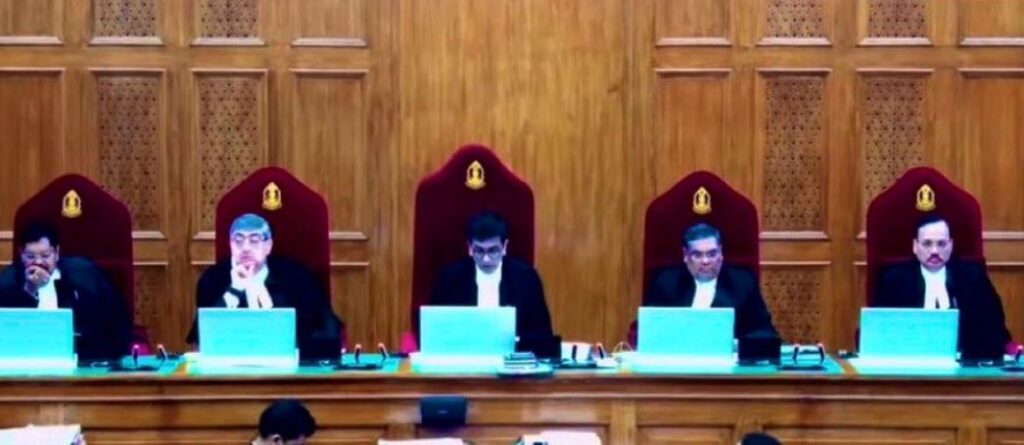Unpacking Supreme Court Verdict on abrogation of Article 370
The five-judge Constitution bench, led by Chief Justice D.Y. Chandrachud, upheld the abrogation of Article 370, declaring the President’s action valid and constitutional.

The Supreme Court's judgment has opened up a new chapter in the history of Jammu and Kashmir
The Supreme Court of India (SC) delivered a landmark judgment on the abrogation of Article 370 of the Constitution, which granted a special status to Jammu and Kashmir. This complex and controversial issue has sparked widespread debate, and understanding the court’s decision requires a multifaceted analysis.
Upholding the Abrogation
The five-judge Constitution bench, led by Chief Justice D.Y. Chandrachud, upheld the abrogation of Article 370, declaring the President’s action valid and constitutional. This decision rested on two key arguments:
1. Procedural Compliance: The court determined that the central government followed the proper procedures laid out in Article 370 for its abrogation. It specifically validated the Presidential Order issued under Article 370(3) and the subsequent resolutions passed by both Houses of Parliament.
2. Temporary Provision: The court interpreted Article 370 as a temporary provision intended to facilitate the integration of Jammu and Kashmir into India. It emphasized that the provision was not intended to be permanent and that the central government had the authority to abrogate it under the Constitution.
Restoration of Statehood: While upholding the abrogation, the court delivered a significant caveat: it emphasized the temporary nature of Jammu and Kashmir’s Union Territory status. The court directed the central government to restore statehood to the region and hold elections by September 2024. This directive aims to ensure a democratically elected government in Jammu and Kashmir and address concerns about the lack of representation for the people of the region.
Fundamental Rights and Ladakh: The court upheld the central government’s obligation to protect the fundamental rights of all citizens of Jammu and Kashmir. This includes ensuring their right to life, liberty, and equality. Additionally, the court upheld the creation of the Union Territory of Ladakh, separate from Jammu and Kashmir, acknowledging its distinct culture and geography.
Mixed Reactions and Uncertainties
The Supreme Court’s judgment has elicited mixed reactions. The central government welcomed the decision, while many political parties in Jammu and Kashmir criticized it, arguing that it undermines the rights of the people. The long-term implications of the judgment remain uncertain, and it is likely to continue to be debated for years to come.
Factors Influencing the Verdict
The court’s decision was shaped by several factors, including:
- Historical context: The court considered the historical context in which Article 370 was drafted and the subsequent developments in Jammu and Kashmir.
- Constitutional provisions: The court meticulously analyzed the relevant provisions of the Constitution, particularly Article 370 and its implications.
- Arguments presented: The court carefully examined the arguments presented by the central government, petitioners challenging the abrogation, and various intervenors.
- Precedent: The court considered relevant legal precedents and how they applied to the specific case.
Future of Jammu and Kashmir: The Supreme Court’s judgment has opened up a new chapter in the history of Jammu and Kashmir. The restoration of statehood and elections offer a chance for the region to move towards a more stable and democratic future. However, several challenges remain, including ensuring the protection of fundamental rights, addressing concerns about political representation, and fostering economic development. The success of the Supreme Court’s vision will depend on the central government’s commitment to fulfilling its directives and engaging in constructive dialogue with all stakeholders in Jammu and Kashmir.
Today's Supreme Court verdict on the abrogation of Article 370 is historic and constitutionally upholds the decision taken by the Parliament of India on 5th August 2019; it is a resounding declaration of hope, progress and unity for our sisters and brothers in Jammu, Kashmir and…
— Narendra Modi (@narendramodi) December 11, 2023
Conclusion: The Supreme Court’s judgment on Article 370 is a complex and nuanced one. Understanding its full implications requires considering the court’s reasoning, the various factors that influenced the decision, and the potential consequences for the future of Jammu and Kashmir.





